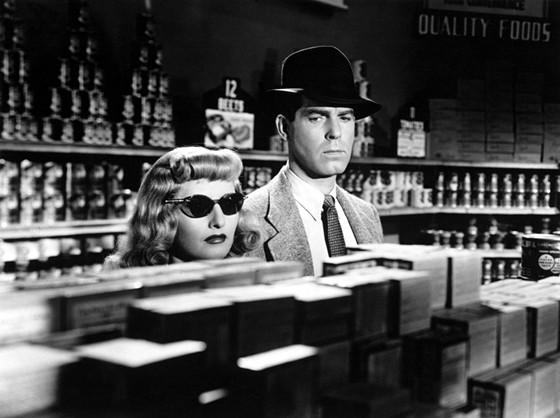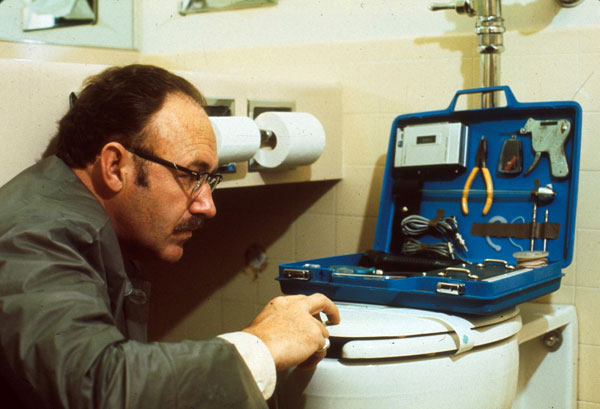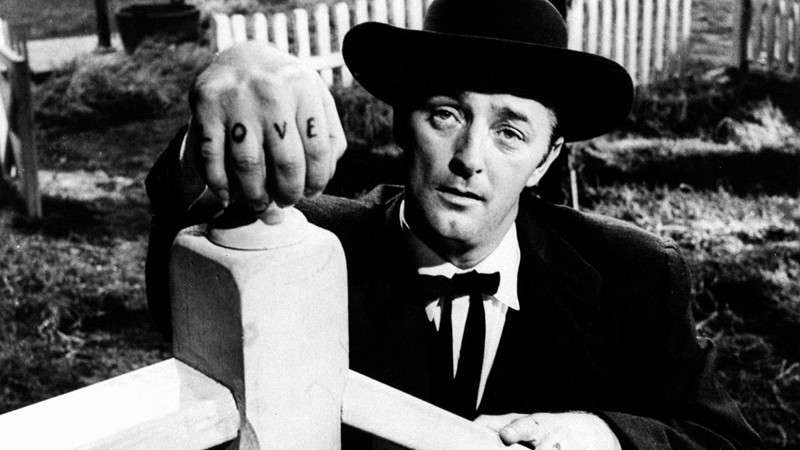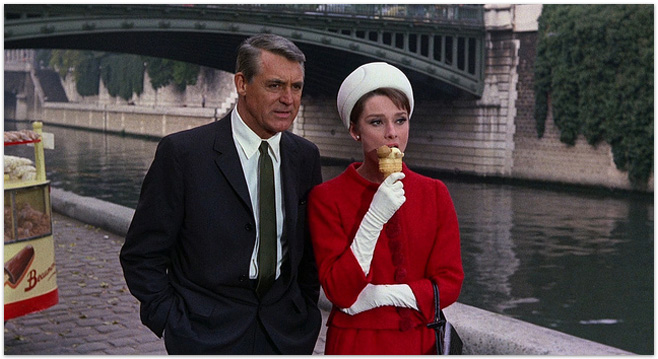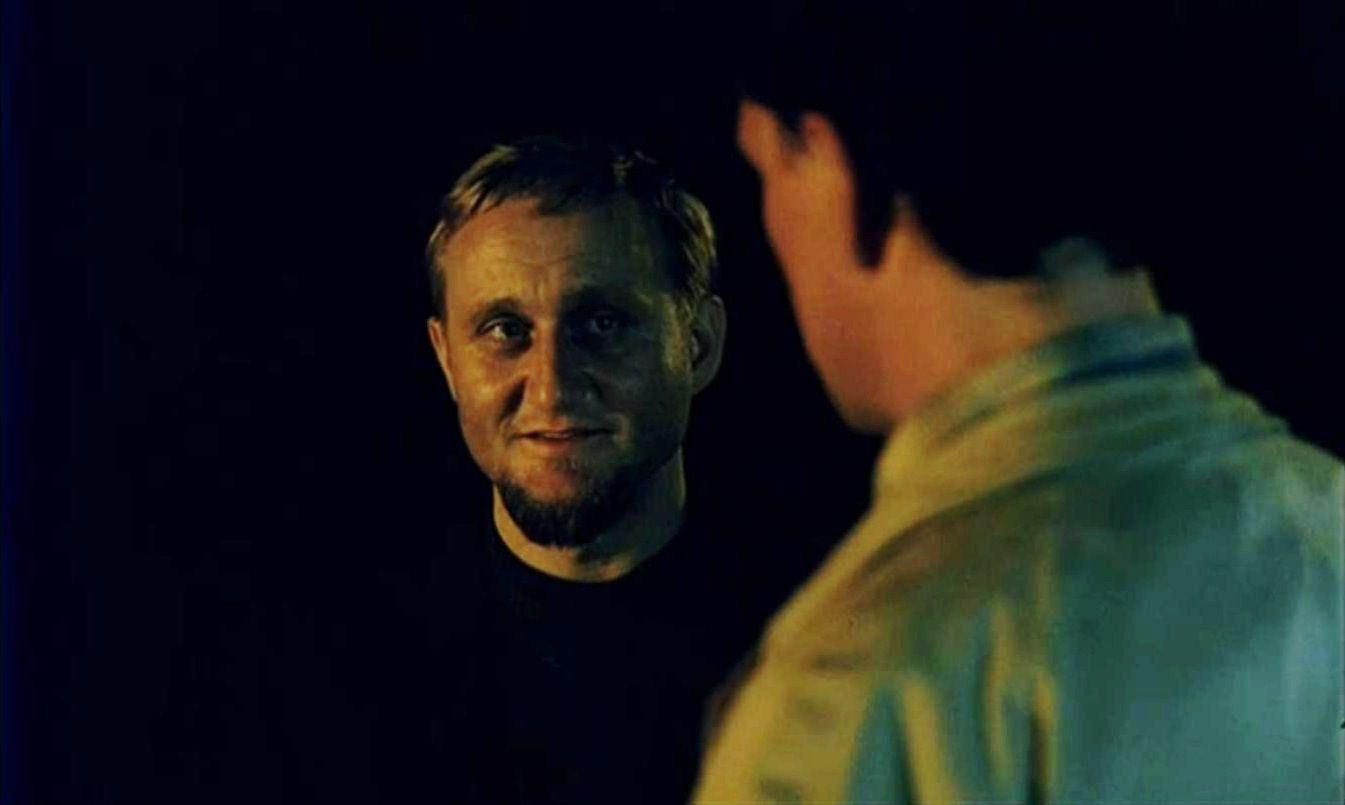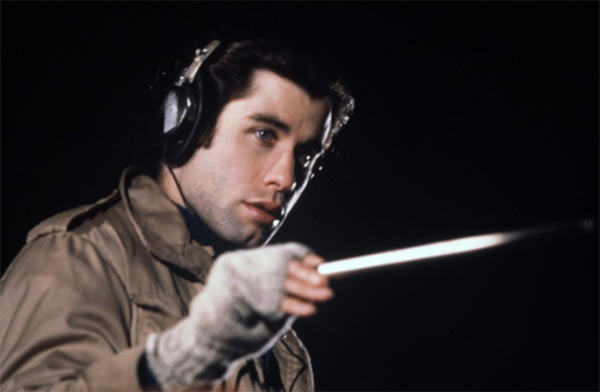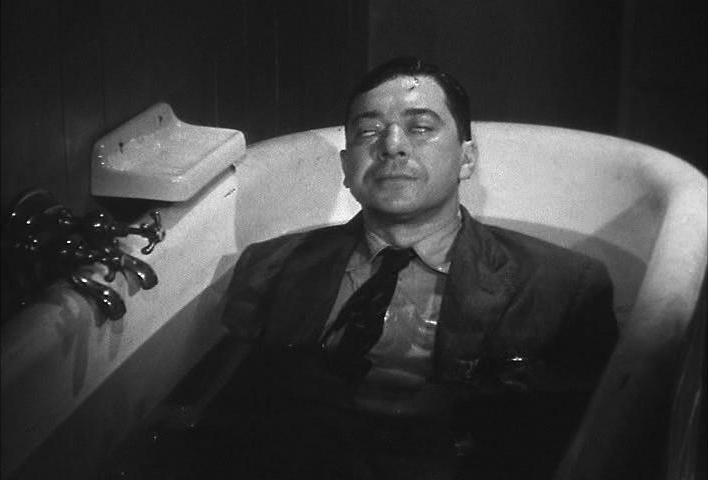7. Double Indemnity (dir. Billy Wilder, 1944)
Billy Wilder set the standard for what is meant when we refer to any film as ‘Noir’ with this 1944 classic. Based on pulp writer James M. Cain’s 1943 novella and co-written by detective novel titan Raymond Chandler, “Double Indemnity” features Fred MacMurray as likeable insurance salesman Walter Neff who sees a way out of his humdrum existence by helping Barbara Stanwyck’s sexy housewife kill her husband and collect “double indemnity” on his life insurance payment.
If this plotline sounds familiar, it’s because this film is ground zero for the Noir genre. The average Noir has dames we know are no good and good guys who kill for them, but this tilts into the disturbing, gut wrenching arena of the Suspense-Thriller in that we worry and care for these emotionally malevolent characters.
In essence, we are rooting for their love to be real and for their crime to remain unsolved, and in doing so, Wilder invites the viewer to his or her own dark side, to the part of us that, if offered a chance to escape our underwhelming existence at the expense of one man’s life… might just take that chance.
6. The Conversation (dir. Francis Ford Coppola, 1974)
In another brilliant riff on “Blow Up,” Gene Hackman gives one of his best performances ever as the tightly wound, insular audio surveillance expert Harry Caul. The Catholic Caul, consumed with guilt over three deaths his wire-tapping efforts caused in the past, begins to fear he may be putting two innocent lovers in harm’s way.
Coppola and editors Walter Murch and Art Rochester’s innovative use of sound in this film brings us inside the head of Caul’s type-A personality as he becomes less and less sure of the world he thought he could hear and know clear as a bell. Winner of the Palm d’Or at the 1974 Cannes Film Festival, Francis Ford Coppola’s 1974 masterpiece lost the Best Picture Oscar to perhaps the only other film and filmmaker that year worthy of the honor: Francis Ford Coppola’s “The Godfather Part II.”
NOTE ON “BLOW UP”: While I have referenced Michelangelo Antonioni’s amazing film “Blow Up” twice, I have not included it here for the simple reason that I don’t believe his primary concern was to serve the parameters of the Suspense-Thriller genre. That said Antonioni’s work is a spellbinding metaphysical mystery – a singular work by a singular artist that has inspired some of the greatest filmmakers of the past and continues to do so today. It is a film I highly recommend seeing.
5. The Night of the Hunter (dir. Charles Laughton, 1955)
The year is 1955, and the lauded British Stage and Hollywood Screen actor Charles Laughton collaborated with screenwriter James Agee to direct his first film, and sadly his last, as critics and audiences alike upon its release panned “The Night of the Hunter.” Thankfully, times have caught up with the brilliant work for as of 1992, “The Night of the Hunter” was deemed “culturally, historically and aesthetically significant” by the United States Library of Congress and was selected for preservation in its National Film Registry.
Laughton’s masterpiece has become legend in the history of film, influencing the likes of Stanley Kubrick, David Lynch and the Coen Brothers to name a few, with its thoroughly modern use of German Expressionist scene design to create something wholly unique, a cinematic representation of the literary genre known as ‘Southern Gothic.’
As slyly scary as Robert Mitchum is in “Cape Fear” he is off the charts horrifying as a self declared preacher and serial killer Reverend Harry Powell, on the trail of stolen loot hidden within a young girl’s toy. As told from the perspective of the young girl and her older brother on the run from this monster, the thoroughly weird, theatrical lighting, heightened dialogue and askew camera angles harken to the days of being a child in bed, watching shadows pour across the ceiling while listening to a parent read from the Brothers Grim.
This is a must-see Suspense Thriller, a truly “grim” fairy tale about the true meaning of those words tattooed upon the knuckles of the sinister Powell: Love and Hate.
4. Charade (dir. Stanley Donen, 1963)
To say a suspense thriller bares the mark of The Master is as superfluous as saying one’s reading lamp owes a debt of gratitude to Edison. Yet, Stanley Donen’s 1969 “Charade” bares such a resemblance to an Alfred Hitchcock film as to be grounds for identity infringement, if such a thing existed. In fact, many filmgoers are often surprised to find out “Charade” wasn’t directed by him.
That said – this joyfully entertaining ride with the gorgeous Audrey Hepburn and the wickedly funny Cary Grant is not to be missed. With Henry Mancini’s wonderful score, the inventive animated opening title sequence by Maurice Binder, plus the wonderful Paris locations to perfectly set the mood for romance and danger, this mysterious tale of a murdered husband, missing gold and the rogue C.I.A. agents who think Audrey Hepburn has it is as perfect a Hitchcock film as one can watch without The Master having anything to do with its creation.
3. The Vanishing (dir. George Sluizer, 1988)
Sluizer’s 1988 classic bares similarities to many Hitchcock thrillers in that we spend almost as much time with the antagonist as we do with our protagonist Rex. On a road trip, Rex’s wife Saskia shares a disturbing dream with him, after which he vows never to leave her side. But upon stopping to fill the car with Petrol, Saskia wanders away and disappears without a trace.
Yet we know who has her, as we’ve met Raymond, a supposedly decent family man, practice and prepare for this abduction. What evolves in this tale is one of the most taut and terrifying suspense thrillers ever created, with our empathy for Rex’s tension-filled two-year search for his wife reaching an absolute breaking point.
The final act is so chilling that Stanley Kubrick called it the scariest film he had ever seen, and asked Sluizer to advise him on the editing for “The Shining.” Skip the Kiefer Sutherland remake and see the original if you can find it.
2. Blow Out (dir. Brian DePalma, 1981)
Brian DePalma, perhaps more than any other director, took the resonant themes and styles of Hitchcock and made them his own. Here, he also makes brilliant use of Michelangelo Antonioni’s 1966 film “Blow-Up,” but rather than the eye leading to suspense, DePalma brings us in through the ear.
John Travolta plays B-movie Sound Designer Jack Terry who may or may not have recorded auditory evidence of gunshots contributing to a presidential candidate’s car driving into a lake with Nancy Allen’s prostitute along for the illicit ride. The characters are so finely etched that we can’t help but root for Travolta’s prideful soundman who pieces together his audio evidence along with stills from the car wreck, making an ersatz movie the authorities won’t believe, but we do.
Hitchcock’s presence is most felt at the end sequence through Philadelphia’s Liberty Bell Day celebration, a salute to the great juxtaposition Hitch used between patriotic revelry and profane violence with The Statue of Liberty chase in “Sabotage” and the climactic end of “North by Northwest” at Mount Rushmore.
1. Diabolique (dir. Henri-Georges Clouzot, 1955)
Often referred to as the French-Hitchcock, Clouzot followed his seminal work “Wages of Fear” by snatching the rights to this twisted suspense tale merely hours before Hitchcock himself made his bid. “Diabolique” is a tale of a love triangle between faculty members at an isolated boarding school where the women conspire together against the man they’ve come to detest.
The film is as humorous as it is terrifying, and one is never quite sure until the shocking end what kind of film you are watching. Is it a murder-mystery, a supernatural revenge tale, a comedy of manners? These twists and turns only contribute to the roller coaster madness that makes “Diabolique” one of the most enjoyable suspense-thrillers of all time.
Please don’t mistake this film for the tepid Sharon Stone remake of 1996, a poor substitute to say the least, as Clouzot’s 1955 original is nothing less than a masterpiece.
A CLOSING NOTE: One may have noticed only four films on this list from the 2000s, with only Ben Affleck’s “Argo” scoring with both critics and box-office alike. Perhaps it is because the authentic Suspense-Thriller is a dying art form, a genre out of favor with today’s smart phone, attention-addled audiences and the studios, producers and filmmakers anxious to please them.
And while there will always be risky filmmakers or those with clout willing to try their hand at crafting a true Suspense-Thriller with characters and action rigorously grounded in reality, it is clearly much easier these days to find financing for films that feature video game theatrics, Superhero or Super-Spy Sci-Fi, or supernatural, CGI induced thrills.
These films provide their own brand of entertainment, excitement and require their own particular feats of artistic mastery and craftsmanship to be sure, but to consider and categorize films of this ilk as authentic Suspense-Thrillers is at best suspect, and at worst, a contributing factor to the extinction of the genre itself.
Author Bio: Jeremy Sklar is a writer-director-producer for Satori!films where he divides his time between New York, Los Angeles and Chicago. Sklar co-directed, produced and wrote the action-comedy feature “Freerunner” starring Sean Faris and Seymour Cassel as well as created the web horror-comedy series “Hollywoodn’t.” Recently Sklar served as writer and segment producer of Executive Producer Chris Rock’s FX show “Totally Biased.” He is currently in pre-production for his next feature “Air Disturbance.” He can be reached via his website at www.jeremysklar.com.
